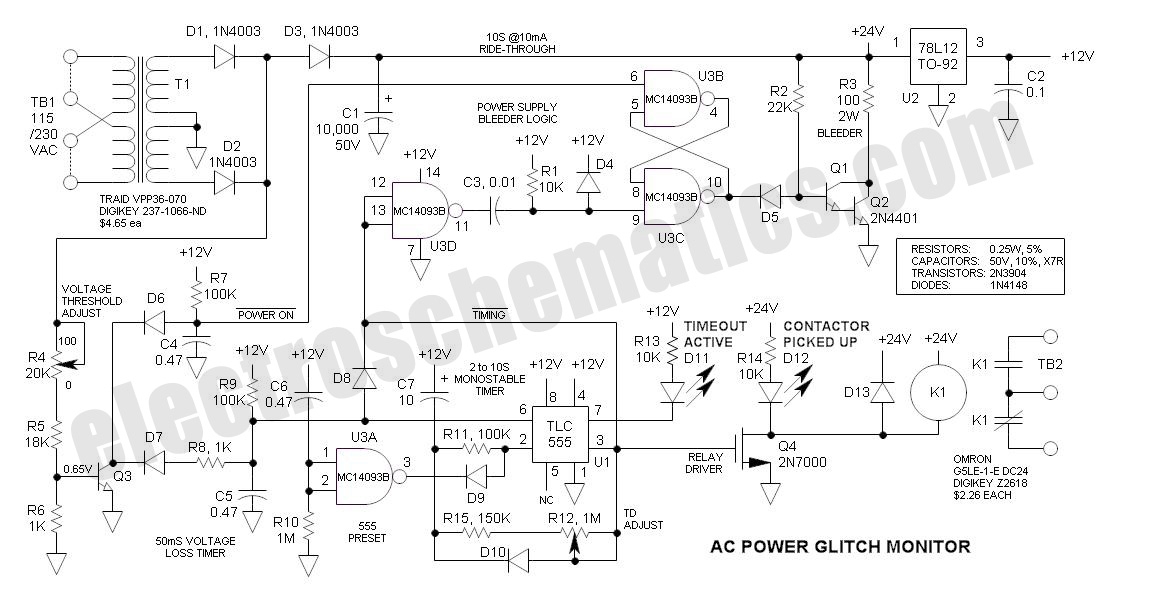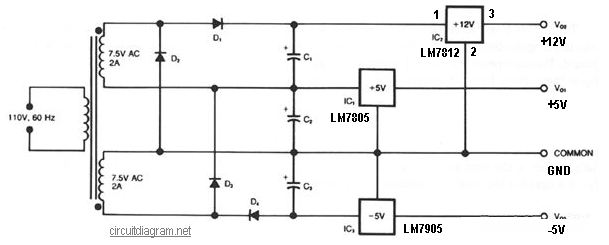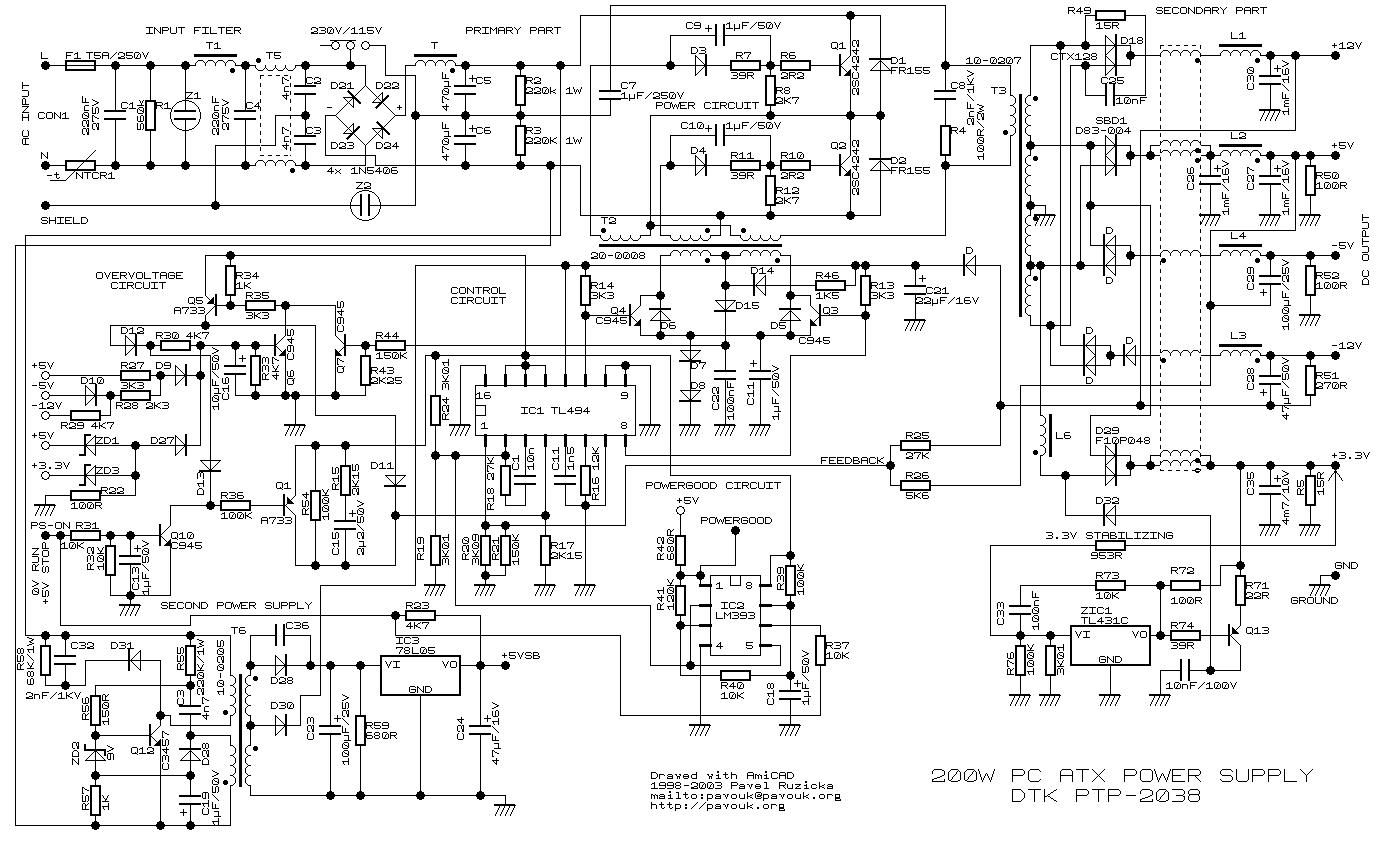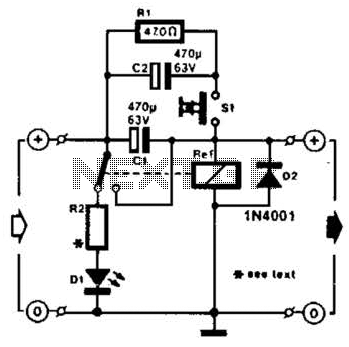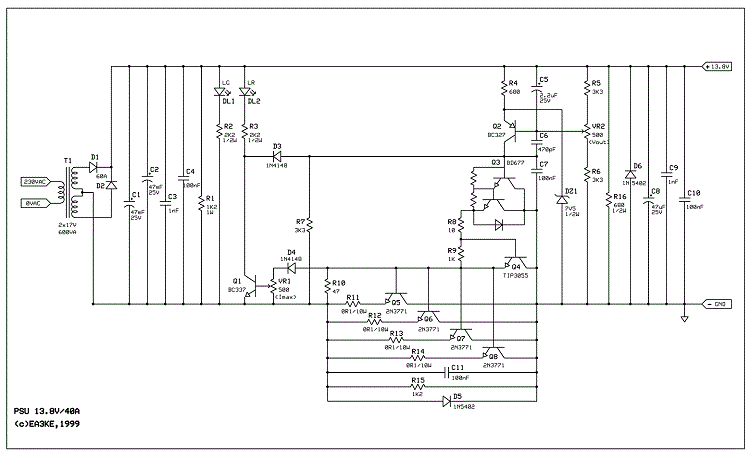
Advanced Power Switcher
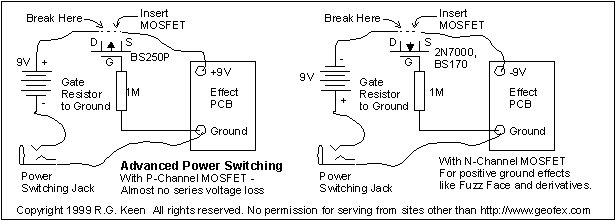
If you are an effects builder or repairer, you know that it is a good idea to protect the circuitry in the effect from the consequences of a reversed battery. While many older effects can withstand a momentary reversal, some more modern components can be damaged if you accidentally touch the battery contacts the wrong way during replacement. Sometimes this is subtle damage. For instance, everyone pretty much knows that CMOS and some op-amps can be killed by reversing their power supplies. This happens because the substrate of the entire chip is isolated from the circuit by a reversed bias diode diffusion. If the power supply...
To protect sensitive electronic circuits from reverse polarity damage, the implementation of a reverse polarity protection circuit is essential. This circuit can be designed using a few common components such as diodes, MOSFETs, or specialized integrated circuits.
A simple yet effective method involves the use of a diode placed in series with the power supply line. When the battery is connected correctly, the diode allows current to flow to the circuit. However, if the battery is connected in reverse, the diode becomes reverse-biased and effectively blocks the current, preventing damage to the circuit. It is important to select a diode with a suitable current rating and low forward voltage drop to minimize power loss.
For applications requiring higher efficiency, a MOSFET-based solution can be employed. In this design, a P-channel MOSFET can be used in a high-side configuration. When the battery is connected correctly, the MOSFET turns on, allowing current to flow. If the battery is reversed, the MOSFET remains off, preventing any current from reaching the circuit. This method offers lower on-resistance compared to a diode, resulting in improved efficiency.
Additionally, incorporating a fuse in the design can provide an extra layer of protection. A fuse will blow if excessive current flows due to a fault condition, further safeguarding the circuit components.
In summary, the implementation of reverse polarity protection is crucial in modern electronic designs, especially for sensitive components like CMOS and op-amps. Utilizing diodes, MOSFETs, and fuses in the design can effectively mitigate the risks associated with reversed battery connections, ensuring the longevity and reliability of the circuitry.If you`re an effects builder or repairer, you know by now that it`s a good idea to protect the circuitry in the effect from the consequences of a reversed battery. While many older effects can withstand a momentary reversal, some more modern components can be damaged if you accidentally touch the battery contacts the wrong way during replacement.
Sometimes this is subtle damage. For instance, everyone pretty much knows that CMOS and some opamps can be killed by reversing their power supplies. This happens because the substrate of the entire chip is isolated from the circuit by a reversed bias diode diffusion.
If the power supplie 🔗 External reference
To protect sensitive electronic circuits from reverse polarity damage, the implementation of a reverse polarity protection circuit is essential. This circuit can be designed using a few common components such as diodes, MOSFETs, or specialized integrated circuits.
A simple yet effective method involves the use of a diode placed in series with the power supply line. When the battery is connected correctly, the diode allows current to flow to the circuit. However, if the battery is connected in reverse, the diode becomes reverse-biased and effectively blocks the current, preventing damage to the circuit. It is important to select a diode with a suitable current rating and low forward voltage drop to minimize power loss.
For applications requiring higher efficiency, a MOSFET-based solution can be employed. In this design, a P-channel MOSFET can be used in a high-side configuration. When the battery is connected correctly, the MOSFET turns on, allowing current to flow. If the battery is reversed, the MOSFET remains off, preventing any current from reaching the circuit. This method offers lower on-resistance compared to a diode, resulting in improved efficiency.
Additionally, incorporating a fuse in the design can provide an extra layer of protection. A fuse will blow if excessive current flows due to a fault condition, further safeguarding the circuit components.
In summary, the implementation of reverse polarity protection is crucial in modern electronic designs, especially for sensitive components like CMOS and op-amps. Utilizing diodes, MOSFETs, and fuses in the design can effectively mitigate the risks associated with reversed battery connections, ensuring the longevity and reliability of the circuitry.If you`re an effects builder or repairer, you know by now that it`s a good idea to protect the circuitry in the effect from the consequences of a reversed battery. While many older effects can withstand a momentary reversal, some more modern components can be damaged if you accidentally touch the battery contacts the wrong way during replacement.
Sometimes this is subtle damage. For instance, everyone pretty much knows that CMOS and some opamps can be killed by reversing their power supplies. This happens because the substrate of the entire chip is isolated from the circuit by a reversed bias diode diffusion.
If the power supplie 🔗 External reference
